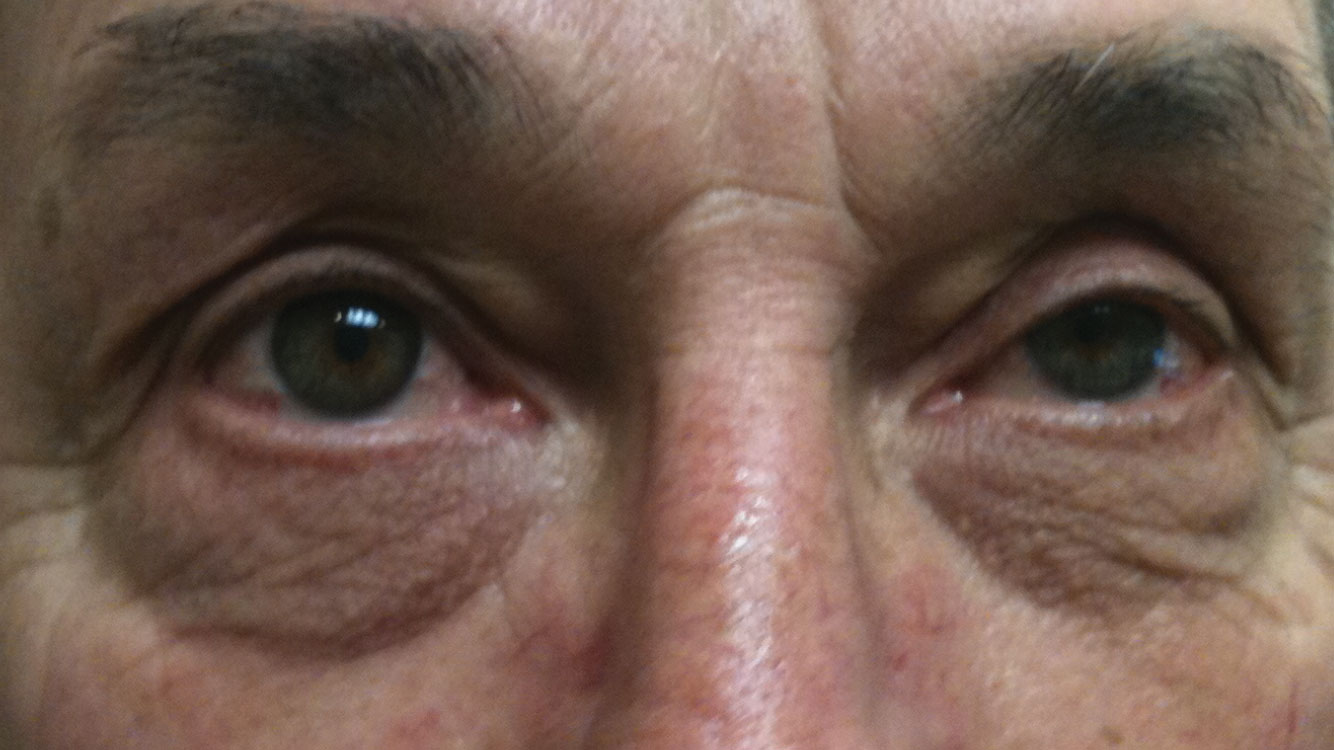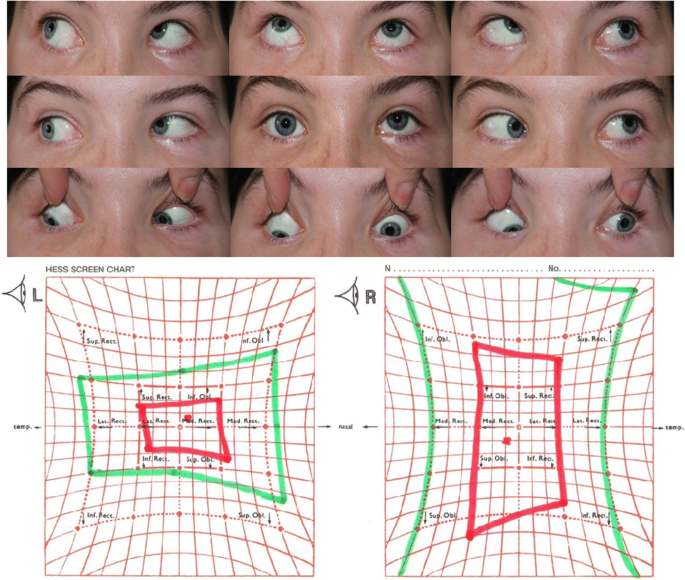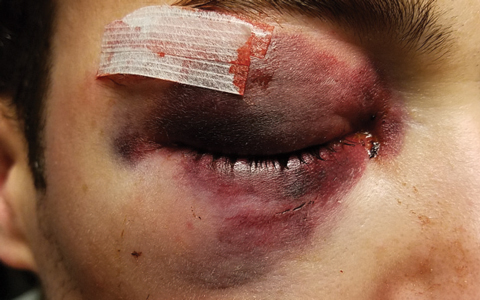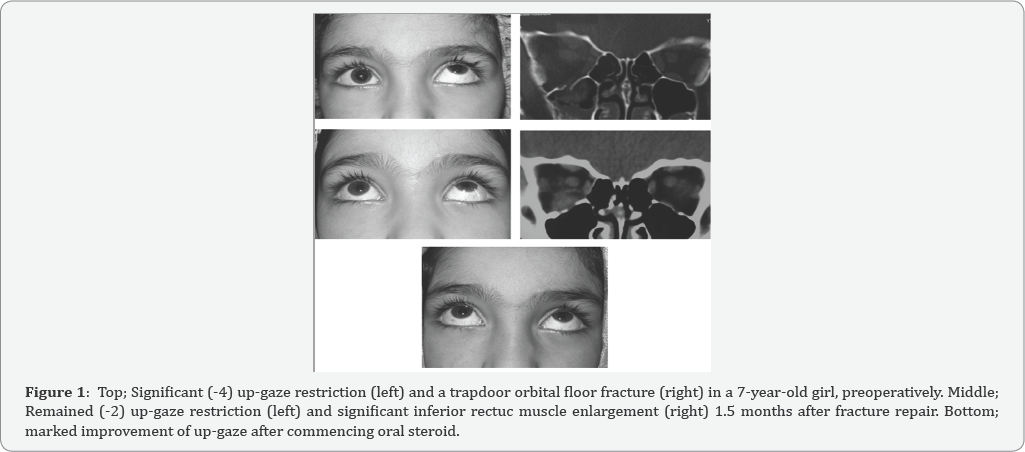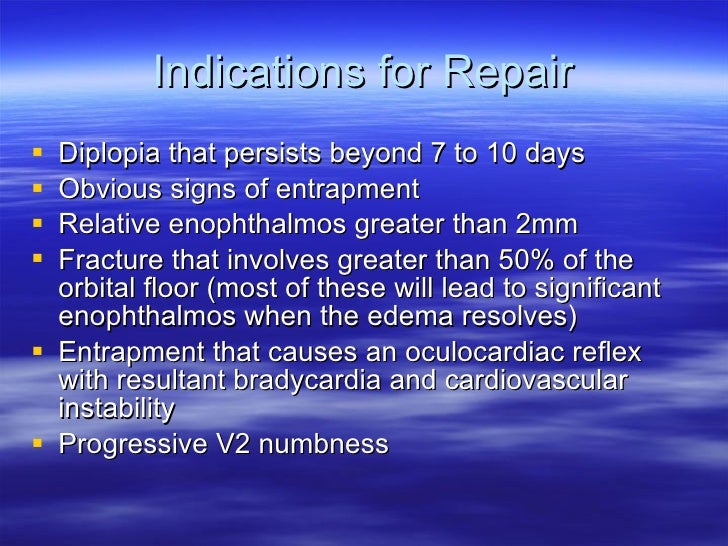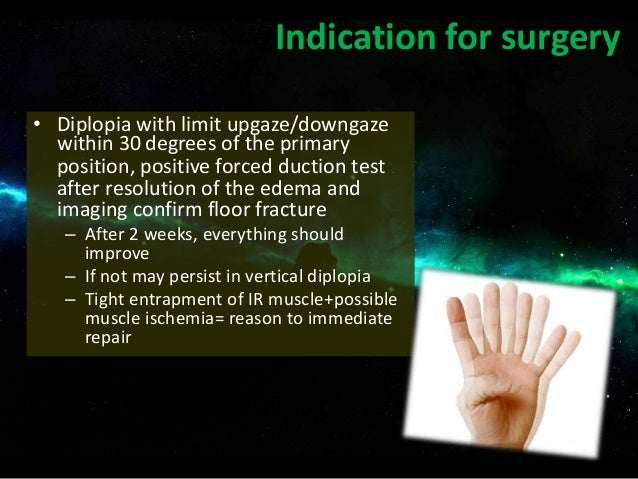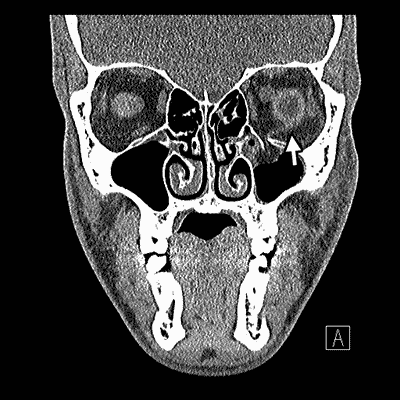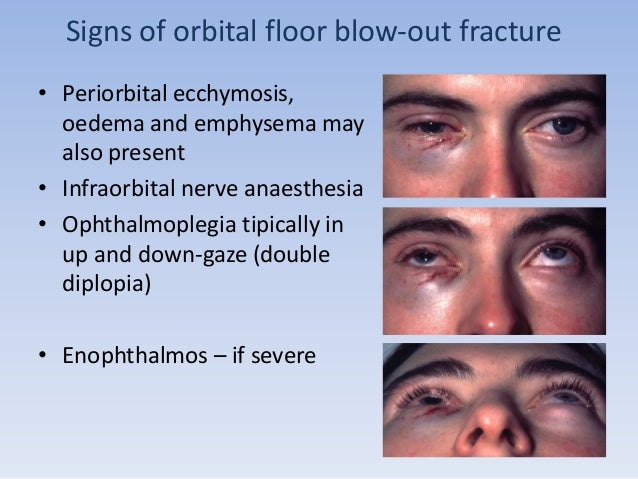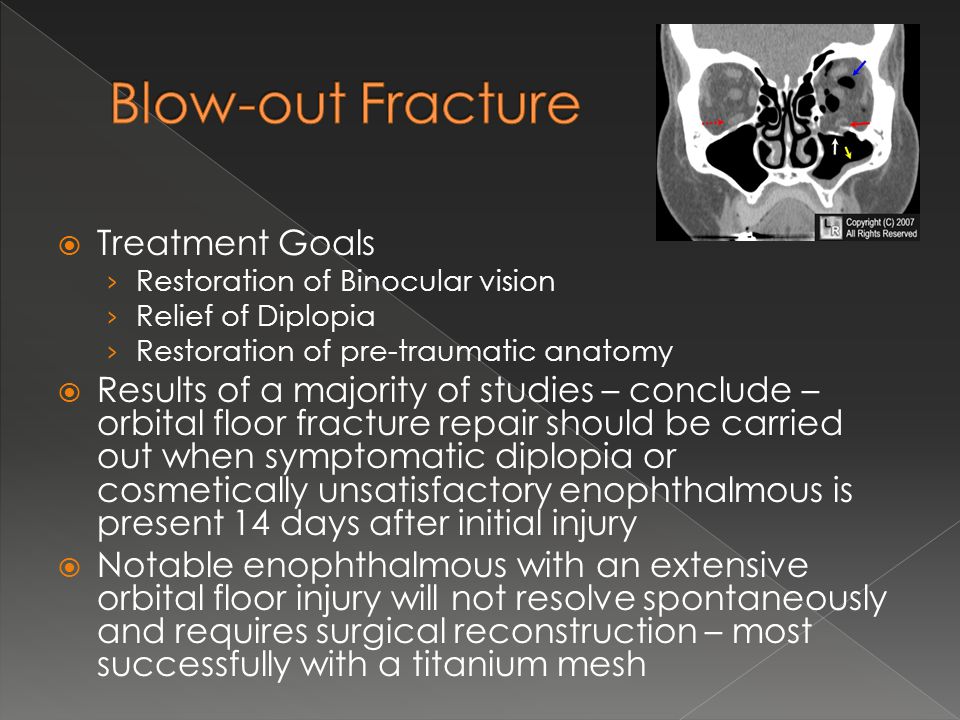Tial postoperative complication the incidence of diplopia after surgical repair of orbital blowout fractures has not been well studied.
Diplopia downgaze after orbital floor repair.
Endoscopic repair of the orbital floor blowout fracture using an endonasal approach appears to be a safe and effective technique for the treatment of diplopia.
A 51 yo african american female presents with diplopia in downgaze after an orbital floor fracture secondary to being punched in the face s p repair with open reduction internal fixation orif and placement of a plate od ocular history.
The eye may be proptotic or enophthalmic depending on the amount of edema causing proptosis and the size of the fracture larger fractures leading to enophthalmos.
Both of them could be weakened by direct trauma 12 17 ischemia so called.
Orbital blowout fracture od s p repair with orif and placement of a plate 7 weeks prior.
Nine patients showed a complete improvement of their diplopia.
Cho who determined that the patient probably had not needed the orbital floor fracture repair in the first place.
Two patients with posterior fractures showed persistent diplopia which was well managed by prisms.
This video illustrates the use of porous polyethylene implant stabilized with cyanoacrylate glue to repair an orbital floor fracture by the transconjunctival technique in a 10 year old child who had sustained a facial trauma.
1 2 in patients with postoperative diplopia restricted extraocular motility and positive forced ductions surgical exploration for residual inferior rectus entrapment is indicated.
However here we present two cases of marked upgaze limitation and positive forced ductions 1 week.
16 the inferior rectus muscle and the inferior oblique muscle may be involved.
Immediately after an orbital floor fracture the affected eye may have impaired motility resulting in double vision.
A minimum of 6 months follow up was available for all patients included in the study.
We retrospectively studied 54 patients who underwent repair of an orbital blowout fracture.
She had an incarcerated inferior rectus muscle in the fracture causing diplopia in upgaze.
None of the patients reported diplopia in the primary position neither downgaze conclusion diplopia persisting after reconstructive surgery of a fractured orbital floor may be corrected surgically.
Persistent diplopia has commonly been reported as a complication of orbital floor fracture repair in children.
Diplopia in patients with orbital floor fractures may appear in either up or downgaze or both 9 14 the etiology of this phenomenon has been speculated on since lerman s 1970 study.
A total of 47 of 54 86 patients had clinically significant diplopia.
Finally after attempting two revisions the surgeon referred the patient to dr.






